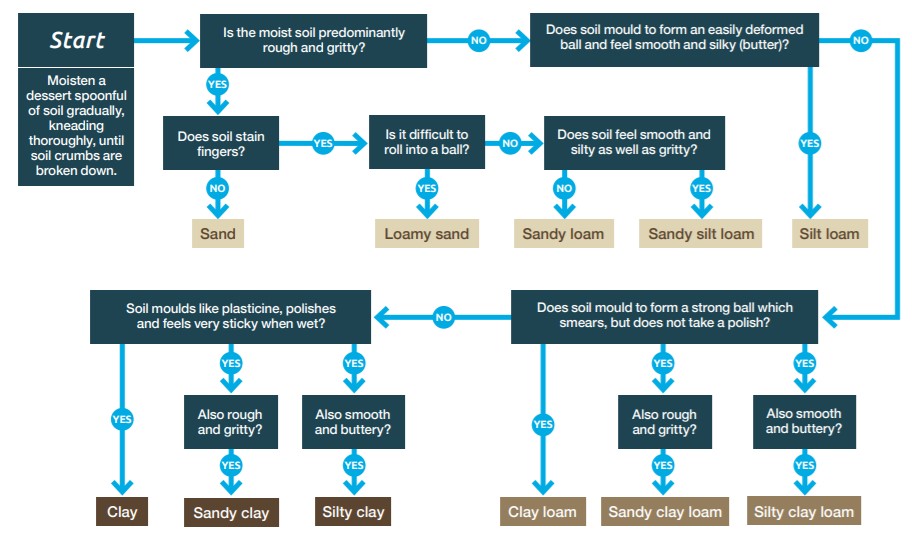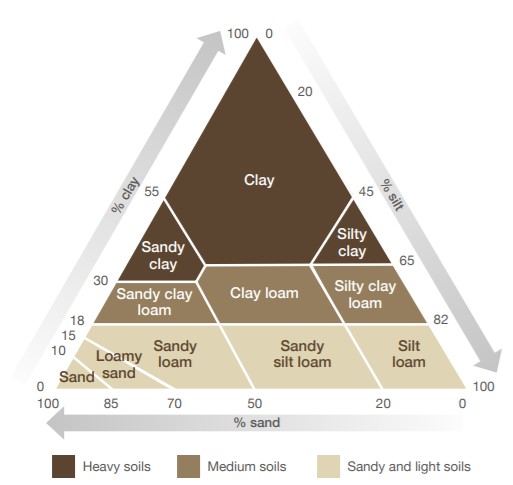Topsoil texture determines how easy it is to work, how it tends to form structure, and how resilient it is to structural damage. Texture, particularly of the subsoil, is the major factor that controls how much water a soil can hold (water holding capacity), how available this is to plants (available water capacity), and how well roots can capture this. Topsoil texture controls how good it is at holding onto lime or other nutrients (buffer capacity). It is not easy to change soil texture; management must adapt to it.
Soil texture is determined most accurately by laboratory analysis. However, it is possible to get an indication of the soil texture class by hand. Soils with more than 50% sand and less than 18% clay feel predominantly rough and gritty (sands, loamy sands and sandy loams). Those with a high proportion of silt particles and under 35% clay feel predominantly smooth and silky (silt loams and silty clay loams). Soils with more than 30% clay feel predominantly sticky, mould to form a strong ball and take a polish (sandy clays, clays and silty clays). Loams fall into the middle with a good mix of sand, silt and clay particles. Organic (peaty) soils have an organic matter content greater than 20% and are grouped according to the balance of sand and organic matter content.

Find out more from AHDB's Principles of Soil Management Guide



